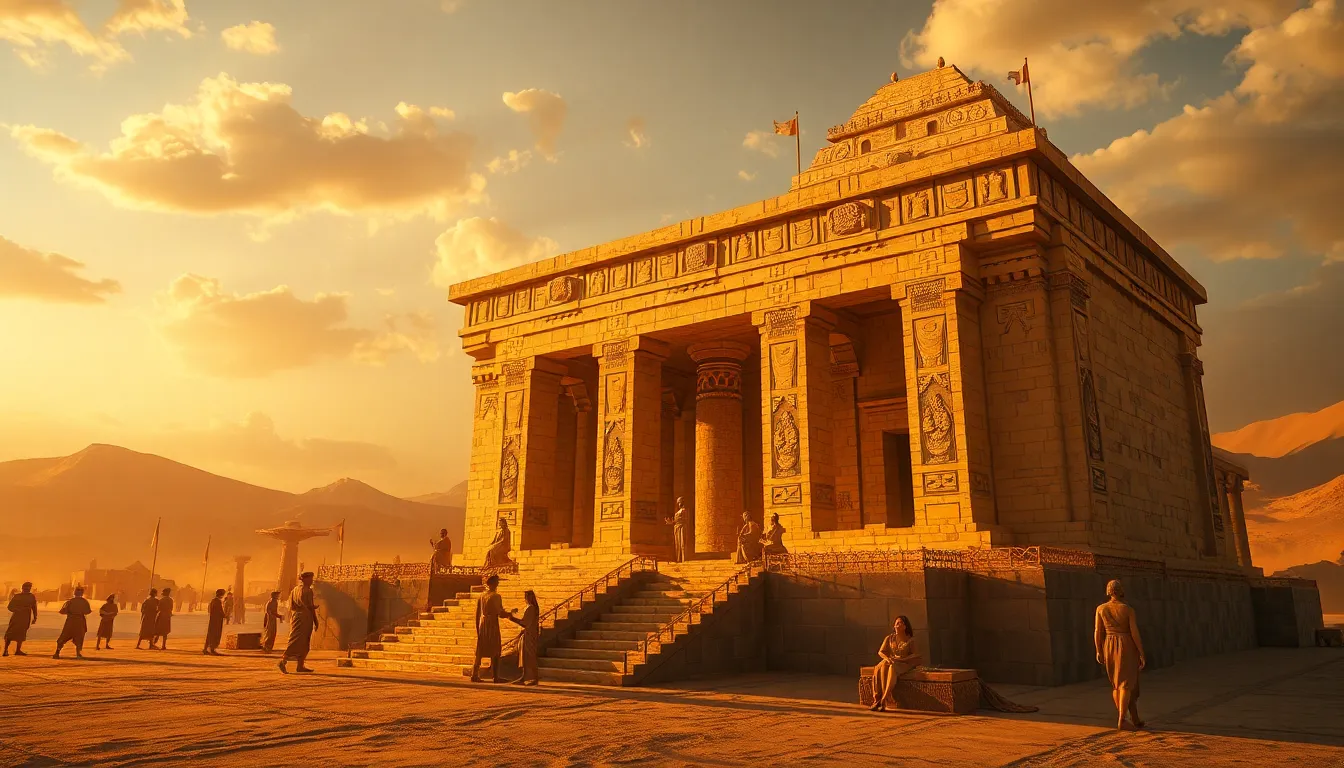Celebrating Creation: The Festival of the Great Ennead
I. Introduction
The Festival of the Great Ennead was a significant event in ancient Egyptian culture, celebrating the creation myth that involved a group of nine deities known as the Ennead. This festival not only highlighted the importance of these gods in the Egyptian pantheon but also served as a vital occasion for social and agricultural renewal. This article aims to delve into the mythology, historical context, rituals, and the lasting impact of this festival on ancient Egyptian society, while also exploring its relevance in modern times.
II. The Mythology of the Great Ennead
The term “Ennead” derives from the Greek word for “nine,” and it represents a group of nine deities central to the creation myth of Heliopolis. The composition of the Ennead includes:
- Atum – The creator god, who originated from the primordial waters of Nun.
- Shu – God of air, who emerged from Atum.
- Tefnut – Goddess of moisture and the twin sister of Shu.
- Geb – God of the earth, son of Shu and Tefnut.
- Nut – Goddess of the sky, sister of Geb.
- Osiris – God of the afterlife and resurrection, son of Geb and Nut.
- Isis – Goddess of magic and motherhood, sister and wife of Osiris.
- Set – God of chaos and storms, brother of Osiris.
- Horus – God of the sky and kingship, son of Osiris and Isis.
The creation myth of the Ennead explains how these gods came into existence, how they interacted with one another, and how they influenced the world. It is a cornerstone of Egyptian belief systems, symbolizing the balance and order of the universe.
III. Historical Context of the Festival
The origins of the Festival of the Great Ennead can be traced back to the early dynastic period of Egypt, where it was intimately linked to the worship of Atum in Heliopolis. Over time, this festival evolved, influenced by the changing political and social landscapes of Egypt’s various dynasties.
During the Old Kingdom, the festival was primarily a royal event, celebrated by pharaohs who sought to legitimize their rule through divine association with the gods. As Egypt moved into the Middle and New Kingdoms, the festival became more inclusive, allowing greater community involvement.
Additionally, the timing of the festival often coincided with key agricultural periods, marking the start of the inundation season when the Nile flooded, bringing fertility to the land.
IV. Rituals and Traditions of the Festival
The rituals performed during the Festival of the Great Ennead were elaborate and deeply symbolic. Key rituals included:
- Processions: Large processions would take place, where statues of the gods would be carried through the streets, allowing the community to participate in the worship.
- Prayers and Offerings: Priests would recite prayers and make offerings of food, incense, and flowers to the deities to ensure their favor.
- Ritual Reenactments: The festival often included reenactments of myths, particularly those involving the conflicts and resolutions between the gods, such as the struggles between Osiris and Set.
Priests and priestesses played a crucial role in these celebrations, acting as intermediaries between the gods and the people. Their duties included maintaining the temples, conducting the rituals, and ensuring that the offerings were made correctly.
Offerings and sacrifices were significant components of the festival, often involving livestock and grains, which were believed to nourish the gods and secure their blessings for the upcoming year.
V. Art and Symbolism in Festival Celebrations
The Festival of the Great Ennead inspired a wealth of artistic representations in ancient Egypt. Artifacts such as:
- Reliefs and Paintings: Depicting the gods of the Ennead and their myths.
- Sculptures: Statues of the deities were crafted to be carried during processions.
- Amulets: Symbols of protection associated with the gods were popular among the populace.
Colors, motifs, and iconography were rich with symbolism. For example, the color green represented fertility and rebirth, while the ankh symbolized life. These artistic expressions not only served religious purposes but also influenced later artistic movements in Egypt and beyond.
VI. The Festival’s Impact on Ancient Egyptian Society
The Festival of the Great Ennead had profound implications for ancient Egyptian society. It fostered social cohesion, bringing communities together in shared worship and celebration. The festival also had economic aspects, including:
- Trade: Merchants would benefit from increased commerce as pilgrims traveled to participate in the festivities.
- Tourism: The festival attracted visitors from various regions, enhancing cultural exchange.
- Local Craftsmanship: Artisans would create goods for the festival, stimulating local economies.
Moreover, the festival influenced governance and political structures, as pharaohs used the occasion to reinforce their divine right to rule, often making public appearances to solidify their connection with the gods.
VII. Modern Interpretations and Celebrations
In contemporary times, there has been a revival of interest in ancient Egyptian festivals, including the Festival of the Great Ennead. Cultural festivals inspired by this event often feature:
- Reenactments: Modern interpretations of ancient rituals and celebrations.
- Educational Programs: Workshops and lectures on ancient Egyptian culture and mythology.
- Art Exhibitions: Showcasing artifacts related to the Ennead and the festival.
These modern celebrations aim to educate the public about ancient practices while fostering appreciation for Egypt’s rich cultural heritage.
VIII. Conclusion
The Festival of the Great Ennead was more than just a religious event; it was a celebration of life, community, and the natural cycles that governed ancient Egyptian society. Its significance can still be felt today as we reflect on the enduring legacy of ancient Egyptian culture. Understanding these historical celebrations enriches our appreciation for the complexities of human belief and the ways in which societies connect with their past.
As we move forward, it is essential to recognize the value of learning from these ancient traditions, allowing them to inspire our modern cultural expressions and communal bonds.




